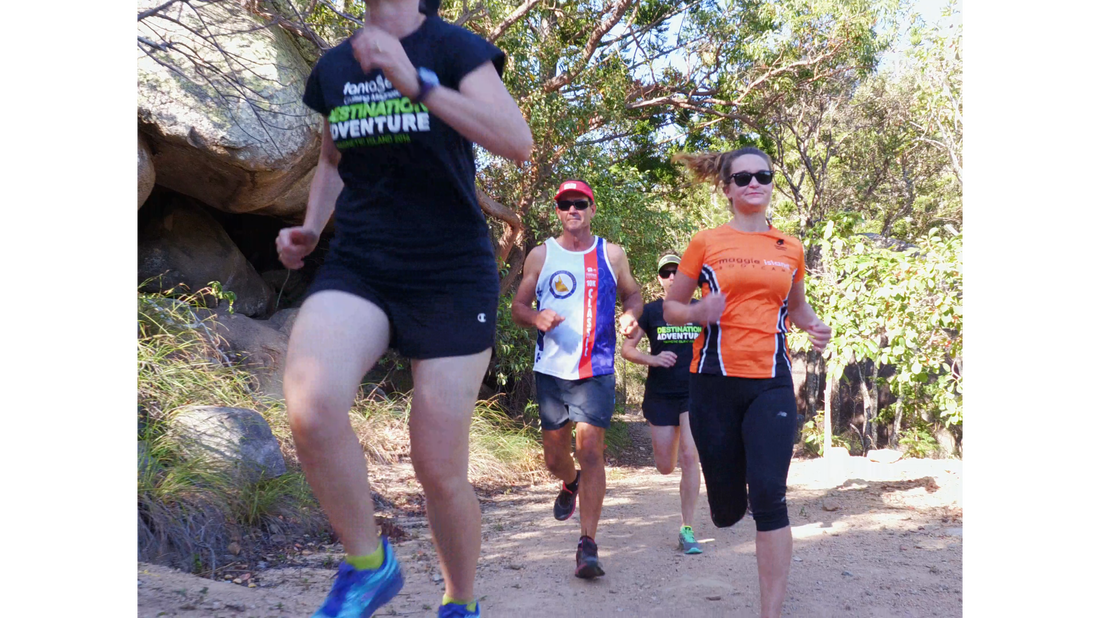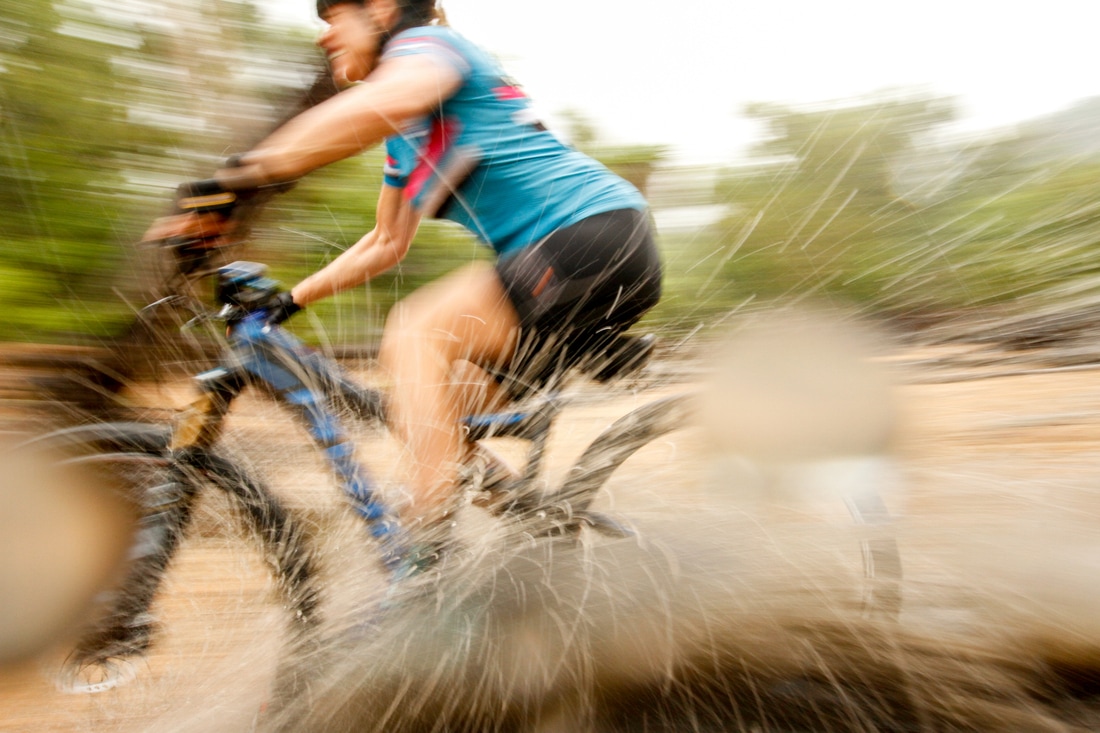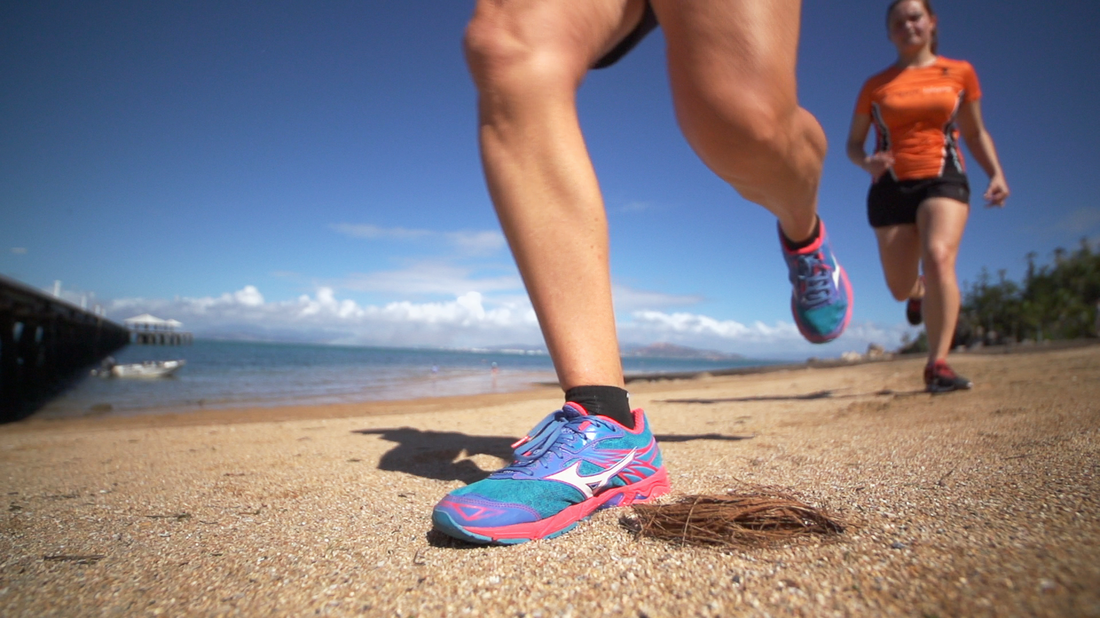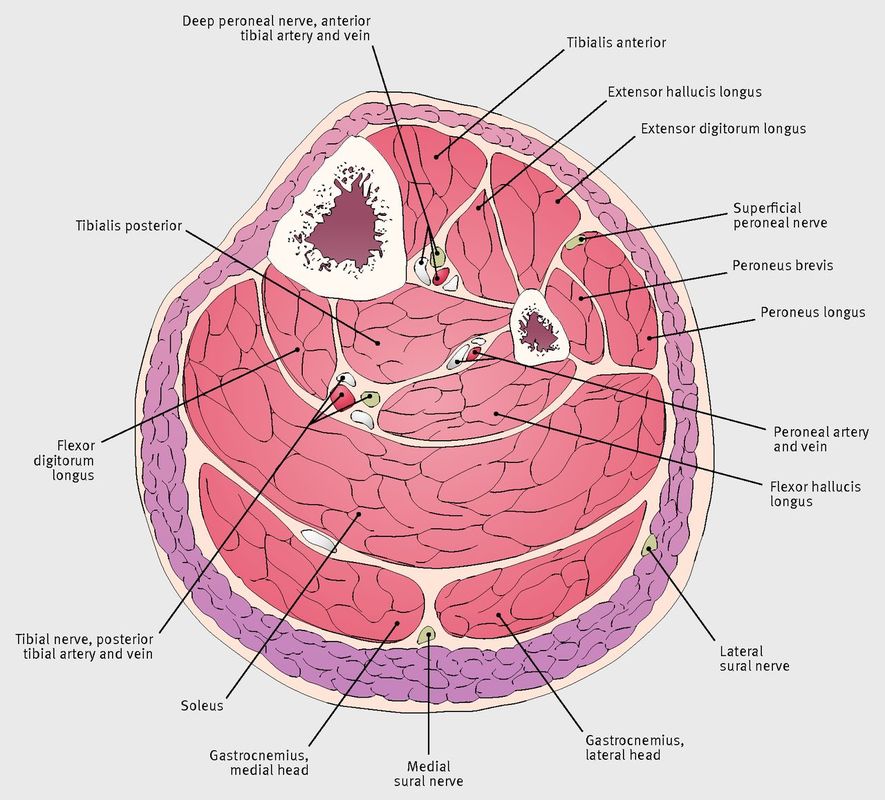|
Are you legs starting to feel tired & heavy when your run? Getting niggles? Sore, hots spots in your feet that you didn't have before? Maybe it's time for some new shoes...
A general rule of thumb has always been when you’ve run in the vicinity of 800 k’s, it was time for some new shoes. The heavier the runner, or even the light runner with a heavy foot strike might only get 500k’s out of a pair of running shoes. Usually it's the midsole of the shoe that fails first. The midsole, funnily enough, is the middle part of the shoe, the bit between the upper and the outsole and in most running shoes is made from a viscoelastic material called EVA (ethylene vinyl acetate) As the shoe ages, the air content of the EVA foam decreases. You can start to see wrinkles and collapses in the side walls of the EVA, the midsole becomes stiffer, thinner and loses its capacity to dissipate energy. This can lead to changes in the way you run with increase pressure on the heel, increasing vertical loading and potential increase risk of injuries. One study has suggested that you increase your risk of injury if your shoes are 4 months or older! But things have changed - and not necessarily for the good. There has been a recent trend towards softer midsoles in running shoes across many of the popular shoe manufacturers. Super, marshmallow soft. And yes, the first feel of a running shoe with a soft midsole is a pillow of cushioning goodness but unfortunately the softer material doesn’t have the same durability as a firmer midsole. The softer midsole absorbs 83% more energy initially but degrades 49% faster than a firmer midsole!! How can you check the midsole of your shoes? Look at them - If you see a crinkle cut patterns in the midsole material then they have started to compress. The dead shoe test is also quick and simple to do. Grab your shoe and see if you can bend the forefoot back down towards the heel of the shoe. If it feels firm and doesn’t shift, awesome. If it easily bends, then the midsole has deteriorated and you probably need new shoe. So, if your shoes are older than 4 months or if you wear them for everything not just running and they fail the dead shoe test, then now is a perfect time to get yourself some new running shoes.
0 Comments
Here's a question for you
If you suffer from isolated quad fatigue or cramping when you ride - is it because a) you haven't had enough electrolytes or magnesium b) you're dehydrated c) you're nickname is "Quadzilla" d) you've got a lazy butt? e) you saddle is either too low, too far forward or a combination of both Let's run through those answers one by one a) If you did have low serum electrolyte concentration you would have generalised skeletal muscle cramping not localised to one muscle b) Exercise induced hyponatraemia ( dehydration) is associated with generalised skeletal muscle cramping not localised to one muscle c) You may in fact have Quads that are so big they should have their own post code but this is not a reason for them to cramp So my guess is either "d" or "e" and that you're what we call a "Quad dominant" Rider whose glutes maybe aren't firing properly. The poor old quads are doing all the power delivery to the pedals.... hence they are not happy by the end of the ride and may even cramp. After a long ride you should have a general feeling of tiredness in all your big leg muscles, not just the quads. What if I told you there is a better way? And therefore you don't need electrolytes or magnesium to solve the problem? The altered neuromuscular control theory of cramping goes like this A repetitive exercise with a muscle working in a shortened position (quads on a bike) with decrease muscle energy leads to the development of muscle fatigue. Throw in some decrease golgi tendon action , increase motor neuron and muscle cell membrane activity and voila you've got yourself a quad cramp. There are two main joint actions that happen during the power phase of the pedal stroke. The quads extend the knee and the butt/glutes extend the hip. And depending on what research you look at - the glutes can contribute between 30 and 50 % of the power to your pedals. That's a heap of power you're missing out on if you are only relying on your quads. Priority one is to make check that your saddle height is not too low or too far forward as this increases load on the quads and is a sure fire way if developing quad pain when riding Now if you spend all of your day sitting on your butt at work you have your glutes in an elongated position. And if the glutes are in an elongated position for 40 hours a week there's a fair chance by the time you jump on your bike you can't activate them- Say hello to quad pain! Not only will you suffer from quad pain being quad dominant with no butt action on the bike but you're also a candidate for knee pain (patello-femoral joint pain) due to excessive tractioning on the knee cap (patella) and back pain because without the glutes you will struggle to maintain pelvic position on the saddle and create over reliance on the back extensors Get your Glutes On Give this a go Lying face down on your stomach, put your hands on both butt cheeks and squeeze them together. See if you can contract only the buttock muscles without the hamstrings or ‘back passage’ muscles kicking in. Then see if you can contract one side separately from the other. Hold each contraction for 3-5 seconds and do them often! Train Smart , Ride Strong Daina Do you have calf pain when you run that gets worse the longer you run? The calf feels tight and might even stop you from running forcing you to walk home? This is a fairly common problem we see in runners and usually is a not caused by an acute injury but often the result of fatigue of the muscle. Other potential causes of calf pain are compartment syndrome or sciatic nerve impingement. But lets save them for another post....in the mean time if you have any numbness , tingling or loss of muscle function - get thee to a doctor! Which calf muscle is it?
There are a heap of muscles in the back of the lower leg. (feel free to glaze over as we go through the anatomy) The "calf" muscle is the medial and lateral head of the gastrocnemius and the lower portion of the "calf" is the soleus. Lying deep beneath the gastrocnemius and the soleus are the toe flexors and the tibialis posterior muscle. So which one is causing you pain? That's a tricky question - most commonly it is the medial head of the gastrocnemius but I have certainly seen calf pain that has been caused by the Flexor Hallucis Longus - which is latin for the muscle that pulls your big toe down. The Flexor Hallucis Longus can get overworked, fatigued and stressed if your big toe is stiff - result is pain in the "calf" Ok - why does the calf fatigue? Well that’s a great question! Is it a problem of the calf or is it a problem up or down stream of the calf? Is your calf muscle "tight" or is it "weak" or is it trying to do the job of something else? If you have weakness or inhibition in your gluteus maximus it’s tricky to get into hip extension at propulsion, which is an important part of running. The result is we either compensate by using our hamstrings as hip extensors (say hello to proximal hamstring issues) or by using an ankle strategy and end up overloading the calf. The other potential cause is restriction at the ankle joint called an equinus ( latin for an ankle that functions like a horses) which makes the life of the calf muscle that much harder Also a sudden change in volume, intensity or frequency of running can also stress out the calf muscle. Sprinting and hills repeats are often the culprits. The other potential cause of calf strain is a changing to a lower profile running shoe, racing flat or “barefoot” shoe. This can change the foot strike pattern of running and increase the demands of the calf muscle. Well my calf is sore. Maybe I should take some anti-inflammatories then? Ah…. The answer would be whoah Nelly! . NSAIDs or anti-inflammatories aren't that flash when it comes to helping muscle injury. There has been a truck load of research over the last 20 years or so that shows anti inflammatories impair muscle healing. Recently the Journal of Applied Physiology published research in 2013 that showed Anti-inflammatories actually slow down repair of muscle after injury which will delay your return to running. This is the last thing we want to do!! So what do I do? Well if the calf pain is significant it might be worth having a few rest days and let the calf settle. I know that sucks, ideally we want to start strengthening the calf muscle but there is no point adding load to an already overloaded muscle. Once the pain has settled isometric calf raises are a fantastic place to start a strengthening program. Double legged, heels slightly off the ground, toes pointing straight ahead and hold for 15-30 seconds. As muscle endurance improves you can progress to single leg, heavy slow repeats and then even some plyometrics. But start with calf raise and hold. Some gentle, slow foam rolling to improve mobility of the calf is useful too. Don't go deep into the pain cave when foam rolling, we don't want to further damage the calf muscle - we just want to give it some love. As Chrissie Amplett said "There's a fine line between pleasure and pain" so don't overdo it! Also address any glute strength and ankle mobility issues and make sure your shoes aren’t completely trashed. Cheers Daina Maybe I'm too heavy to be a runner?
Hmmmm...interesting question! I'd respond - what's too heavy? There is a certain logic to think that heavier runners are more likely to get injured than their lighter friend. But some research actually shows this not to be the case! And you've got to admit that running would have to be one of the most effective weight loss exercises out there! Fitness vs Fatness Want to live longer? A recent paper in the Journal of Science and Sports Medicine looked at fitness vs fatness.They worked out that "Cardiorespiratory fitness (CRF) is a more powerful predictor of mortality than body mass index or adiposity, (how fat you are) and improving CRF is more important than losing body fat for reducing risk of cardiovascular disease!" They found that if overweight people wanted to live longer they were better off on focusing on improving fitness than losing weight. "There is little downside to becoming more physically active, and the threshold for CRF necessary to yield significant health benefits is fairly modest and achievable by most adults. A focus on improving CRF through increased physical activity is a safer alternative for management of obesity and associated comorbidities." Get Thee running! But hang on - won't I get injured? Not necessarily. In a study published in the British Journal of Sports Medicine the researchers looked at the incidence of running-related injuries in over two thousand runners. And the only relationship they found between weight and injury was in female runners with a BMI less than 21 . These lightweight female runners were more likely to have tibial stress fractures and spine injuries than their heavier counterparts! Maybe their too skinny to run! The other interesting thing they found was men with a BMI higher than 26 and in shoes 4-6 months old were less likely to get injured! Get Thee Running! Don't runners have more issues with their knees? No. In a recent paper conveniently titled Running and Knee Osteoarthritis: A Systematic Review and Meta-analysis they reviewed 153 previously published papers and found enough evidence to suggest that there was no association with running and osteoarthritis of the knee, The cool bit was if you are a runner you are less likely to have knee surgery compared to your non running friend Get Thee Running! So what should I do? How you run, as well as how often you run are important. And if you are new to running alternating between walking and running small distances is a great place to start. Running efficiently will put less stress on the body- so it's worth getting your run technique checked out by a running coach or health professional. Also make sure your shoes aren't too old. If you are running regularly - change them every 6 months. Expensive? Yes, but it's better than getting injured. Get Thee Running! |
|






 RSS Feed
RSS Feed